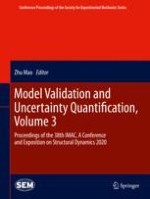Model Validation and Uncertainty Quantification, Volume 3: Proceedings of the 38th IMAC, A Conference and Exposition on Structural Dynamics, 2020, the third volume of nine from the Conference brings together contributions to this important area of research and engineering. The collection presents early findings and case studies on fundamental and applied aspects of Model Validation and Uncertainty Quantification, including papers on:
Uncertainty Quantification in Material Models
Uncertainty Propagation in Structural Dynamics
Practical Applications of MVUQ
Advances in Model Validation & Uncertainty Quantification: Model Updating
Model Validation & Uncertainty Quantification: Industrial Applications
Controlling Uncertainty
Uncertainty in Early Stage Design
Modeling of Musical Instruments
Overview of Model Validation and Uncertainty
